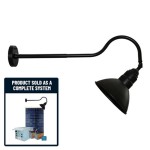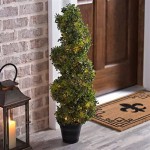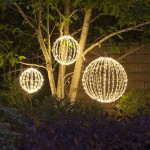Outdoor Pavilion Ideas: Enhancing Your Outdoor Living Space
An outdoor pavilion offers a versatile and attractive addition to any property, providing shelter, shade, and a designated space for relaxation, entertainment, or even outdoor dining. Selecting the ideal pavilion design involves careful consideration of space, budget, intended use, and aesthetic preferences. This article will explore various outdoor pavilion ideas, focusing on key aspects such as materials, styles, and functional considerations to help inform the planning and construction of a successful outdoor pavilion.
Understanding Pavilion Styles and Designs
Outdoor pavilions are available in a diverse range of styles, each offering a distinct aesthetic and functional appeal. The choice of style significantly impacts the overall look and feel of the outdoor space. Considering the existing architectural style of the home and the surrounding landscape is crucial when selecting a pavilion design.
One prevalent style is the traditional pavilion, often characterized by its classic architectural features. These typically include symmetrical designs, gabled roofs, and supportive columns. Traditional pavilions often feature ornate detailing and are often constructed from wood or vinyl, lending a sense of timeless elegance to the outdoor space.
Conversely, modern pavilions embrace minimalist designs and clean lines. These structures often incorporate materials such as steel, glass, and concrete, creating a sleek and contemporary aesthetic. Modern pavilions often prioritize functionality and openness, seamlessly blending with the surrounding environment.
For those seeking a more rustic and natural aesthetic, a timber frame pavilion presents an appealing option. Constructed from heavy timbers joined together using traditional woodworking techniques, these pavilions showcase the beauty and durability of natural wood. Timber frame pavilions exude a sense of warmth and craftsmanship, often complementing natural landscapes.
A gazebo-style pavilion, often hexagonal or octagonal in shape, provides a more intimate and enclosed space. Gazebo pavilions are well-suited for gardens or smaller outdoor areas, offering a charming and secluded retreat.
Open-air pavilions, as the name suggests, feature minimal walls or enclosures, allowing for unobstructed views and ventilation. These pavilions are ideal for warm climates and are often used for outdoor dining or lounging areas.
In contrast, enclosed pavilions offer greater protection from the elements, featuring walls and sometimes even windows and doors. Enclosed pavilions can be used as outdoor living rooms, studios, or even guest houses.
Material Selection for Outdoor Pavilions
The choice of materials significantly impacts the longevity, maintenance requirements, and overall appearance of the outdoor pavilion. Selecting durable and weather-resistant materials is paramount to ensure the pavilion withstands the elements and maintains its structural integrity over time.
Wood remains a popular choice for pavilion construction, offering natural beauty and versatility. Pressure-treated lumber is often used for framing, providing resistance to rot and insect infestation. Cedar, redwood, and teak are also favored for their natural durability and aesthetic appeal. However, wood requires regular maintenance, including staining or sealing, to prevent weathering and decay.
Vinyl offers a low-maintenance alternative to wood. Vinyl pavilions are resistant to rot, insects, and fading, requiring minimal upkeep. Vinyl pavilions are often available in a variety of colors and styles, mimicking the look of wood without the associated maintenance demands.
Metal, particularly steel and aluminum, provides exceptional strength and durability. Metal pavilions are resistant to rust and corrosion, making them suitable for harsh weather conditions. Metal pavilions often feature sleek, modern designs and can be powder-coated in a variety of colors.
Composite materials, such as recycled plastic and wood fibers, offer a sustainable and low-maintenance option. Composite pavilions are resistant to rot, insects, and weathering, requiring minimal upkeep. Composite materials are also available in a variety of colors and textures, mimicking the look of natural wood.
Roofing materials also play a crucial role in the pavilion's overall aesthetic and performance. Asphalt shingles are a cost-effective and readily available option, providing reliable protection from the elements. Metal roofing offers exceptional durability and longevity, while also adding a modern touch to the pavilion. Wood shingles or shakes provide a rustic and natural look, but require regular maintenance. Slate or tile roofing offers exceptional durability and aesthetic appeal, but can be more expensive.
Functional Considerations and Customization
Beyond aesthetics and materials, the intended use of the outdoor pavilion should heavily influence its design and features. Consider how the pavilion will be used to inform decisions regarding size, layout, and additional amenities.
For outdoor dining, a pavilion may require ample space for a table and chairs, as well as a nearby grilling area or outdoor kitchen. Incorporating built-in seating, storage, and lighting can enhance the functionality and comfort of the dining area.
If the pavilion is intended for relaxation and lounging, comfortable seating, such as sofas, armchairs, and hammocks, are essential. Consider adding a fireplace or fire pit for warmth and ambiance. Privacy screens or curtains can also create a more secluded and intimate space.
For those who enjoy outdoor entertainment, a pavilion can be equipped with a television, sound system, and bar area. Consider adding outdoor lighting to create a festive atmosphere for evening gatherings.
Pavilions can also be customized with various features to enhance their functionality and aesthetic appeal. Adding screens or windows can provide protection from insects and the elements, while allowing for ventilation and natural light. Incorporating landscaping around the pavilion can further blend it with the surrounding environment. Adding a ceiling fan can improve air circulation and comfort in warm climates. Installing outdoor lighting can extend the use of the pavilion into the evening hours.
Consider incorporating smart home technology into the pavilion design. Smart lighting, sound systems, and climate control can be controlled remotely, enhancing convenience and comfort. Adding a rain sensor can automatically close retractable screens or awnings during inclement weather.
The size of the pavilion should be proportionate to the size of the yard and the intended use of the space. A small pavilion may be sufficient for a cozy seating area, while a larger pavilion is needed for outdoor dining or entertainment. Consider the local building codes and regulations regarding pavilion size and placement.
Before constructing the pavilion, it is important to obtain the necessary permits and approvals from the local authorities. Check with the local building department to ensure compliance with zoning regulations and building codes. This will help avoid potential delays and costly mistakes.
The foundation of the pavilion is a critical element of its structural integrity. Depending on the size and weight of the pavilion, a concrete slab, pier foundation, or gravel base may be required. Ensure that the foundation is properly prepared and leveled to provide a stable and long-lasting base for the pavilion.
Proper drainage is essential to prevent water damage and erosion around the pavilion. Ensure that the surrounding area is properly graded to direct water away from the pavilion foundation. Consider adding gutters and downspouts to collect rainwater and redirect it away from the structure.
The design and construction of an outdoor pavilion offers an opportunity to enhance the outdoor living space, providing shelter, shade, and a designated area for relaxation, entertainment, or outdoor dining. Careful consideration of style, materials, and functional requirements is critical to ensuring the construction of a pavilion that meets the specific needs and aesthetic preferences of the homeowner.

46 Backyard Outdoor Pavilion Ideas For Ultimate Comfort Covered Patio Gazebo Fireplace

Simple Backyard Pavilion Ideas Inspiration Guide

46 Backyard Outdoor Pavilion Ideas For Ultimate Comfort Pool House Designs Patio

7 Actionable Backyard Pavilion Ideas That You Can Replicate Homelovr

5 Inspiring Backyard Pavilion Ideas Models Find Your Best Pavilions

46 Backyard Outdoor Pavilion Ideas For Ultimate Comfort Fireplace Designs Rustic Fireplaces

5 Inspiring Backyard Pavilion Ideas Models Find Your Best Pavilions

Pavilion Design Ideas And Inspiration Country Lane Gazebos

Poolside Pavilion With Tv Outdoor Fireplace Kitchen Ll A Interior Design

Simple Backyard Pavilion Ideas Inspiration Guide







